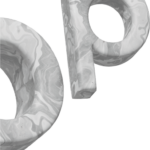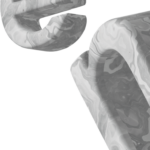

Set up your shop
Funding my project

What is a cash flow statement and why is it important?
24 March 2023
As a new independent retailer, there are a number of terms and customs that you will need to familiarise yourself with. From business plans to tax reports, from profit and loss accounts to cash flow statements… It can all seem a bit overwhelming.
It’s important not to get bogged down by these foreign-seeming concepts. We’ve broken down these and other questions you may have into easy to digest articles. And in this article, we’ll explain what a cash flow statement is, why it’s important, how to prepare one, and provide an example of a cash flow statement for your shop.
What is a Cash Flow Statement?
A cash flow statement is a financial form that is required for any publicly traded companies, alongside the balance sheet and profit and loss account. However, even for companies that aren’t publicly traded (on the stock exchange), it is a great tool to help you understand your cash flow: where it is coming from, and where it is being spent.
Unlike a profit and loss account, which highlights revenue through sales, expenses and any losses suffered during the fiscal year, a cash flow statement for your shop will only highlight the revenue from operations, investments, and financing that are real cash operations.
For example, if you are running a retail shop where you extend credit to your customers, such as a mattress company that allows its customers to pay over the course of three months with no interest, any sale of a mattress that is paid up front would enter into your cash flow. However, while the sale of a mattress that is to be paid for at a later date is entered into your total sales revenue, any cash that hasn’t yet been received is deducted from your cash flow statement. You can’t pay your loans, or yourself, with a promise of future income.
An example cash flow statement will also list any outgoing cash flow. Examples of outgoing cash flow include paying back loans and interest, purchasing inventory, and paying salaries for yourself or your staff.
What is the purpose of a Cash Flow Statement?
A cash flow statement is an important tool, not only because it gives you an idea of whether you are properly managing your cash flow, but also helps to put your income statement and sales figures into perspective. It’s great to make a lot of sales, but if you don’t have cash coming in, you can’t make payments towards any of your obligations without tapping into any reserves you may have accumulated.
A cash flow statement is specifically focused on a type of accounting known as cash accounting. Unlike accrual accounting where revenue is counted before the cash is actually received, cash accounting only counts sales receipts when the money is received or expenses when the invoice is paid.
Why is a Cash Flow Statement important?
It’s easy to get carried away watching your sales figures improve. This is a great sign for your business, and you should celebrate your success. However, it’s important not to start running before you’re sure you have solid footing.
A cash flow statement will put these sales into perspective. Do you have enough of a cash flow profit that you can start thinking about investing into expanding your business or hiring on extra staff? Or are those extra sales just managing to cover the costs of any loan payments and rent? Is there room to invest in new equipment, and if not, where is your outbound cash flow being sent? Can you optimise your expenditures?
It’s absolutely crucial not to try to expand too much too early. At the same time, investing in your business will enable you to meet new strategic challenges in an evolving retail market, whether that means updating your ERP (Enterprise Resource Planning) software to verify your core business processes are optimised or hiring on a SEO (Search Engine Optimisation) firm to make sure your online retail store attracts the most eyes possible. Investment is important, but you must ensure you have a stable and sufficiently robust cash flow to not default on any other payments.
Preparing a Cash Flow Statement
So, it’s time to tackle the issue head on. We know that it’s a useful tool, so now let’s take a look at what makes up an example cash flow statement and how you can prepare a cash flow statement for your retail business.
Your cash flow statement example should be broken down into three main categories:
- Cash flow from operations,
- Cash flow from investing,
- Cash flow from financing.
Let’s take a deeper look at these three categories to better understand what they mean and what kind of information you will want to add into these categories.
Cash flow from operations
This section of your statement will cover all of the revenue and expenditures related to your day-to-day business activities. You’ll start by defining your net income. Your net income is simply the total of all your revenue less the incurred expenses, such as the procurement of goods or salaries paid out.
You’ll also deduct any sales stuck in you accounts receivable, i.e., sales for which you haven’t yet received payment. In this segment of your retail store’s cash flow statement, you can also list any depreciation of assets or goods that you have received, but are yet to pay for (accounts payable).
However, this section should not contain any information about your cash investments (whether in or out) or financing costs. These will be added in the appropriately labelled sections. Here, you really just want to hone in on only on those revenue and expenses that are directly related to or attributable to your core business.
Cash flow from investing
Here, you are going to list any cash flow related to your investments. For most small retailers, this section will mostly show outward cash flows. As we mentioned previously, investing in your company is a good way to futureproof it against changes in the market and to stay up to date with the latest trends, so it’s normal to spend some of your cash flow on investments.
Buying a new ERP or payment system for your retail shop may have an intangible benefit for your business, but the real cost of any improvements to your shop should be listed here.
So, what kinds of things would you list as a cash flow in here? To answer that, let’s imagine that you run a retail shop that offers local clients the chance to have their goods delivered. Of course, you’ll need to invest in a delivery vehicle. The year you purchase the vehicle, assuming you pay for it in cash not and through any financing, you would deduct the price from your investment cash flow. In subsequent years, you could list the depreciated value of the vehicle in your cash flow from operations. Finally, when you’re ready to invest in a new vehicle, you could choose to sell the old vehicle and add the value you sold it at in the cash flow from investing section.
Another example would be for a retailer who decided to purchase their property rather lease or rent out a space. If you decide to move to a new location, selling the old property would also be listed here.
Cash flow from financing
Here, you will list all positive and negative cash flow related to any financing operations. Of course, the most common type of expenditure you can expect to be listed here would be for the repayment of any loans. You’ll also use this section to list any cash received during this period from taking out a new loan or from private investors.
Example of a Cash Flow Statement
Now that we know what kind of information you should include on a cash flow statement, let’s go one step further and create an easy example of a cash flow statement in order to put the knowledge into practice in a more easily digestible format.
My Fictitious Mattress ShopCash Flow Statement |
|
|---|---|
|
Operating Activities |
|
|
Net Income (revenue – expenses) |
127,215 |
|
Adjustments: |
|
|
Depreciations |
6,394 |
|
Accounts Receivable |
(8,243) |
|
Accounts Payable |
14,874 |
|
Inventory |
(9,448) |
|
Investing Activities |
|
|
Purchase of new equipment and property |
(43,817) |
|
Proceeds from sale of property |
9,535 |
|
Financing Activities |
|
|
Repayment of debts |
(31,244) |
|
Total Cash flow (end of fiscal year) |
65,266 |
In this simplified cash flow statement example, we’ve taken some of the cash flows listed above to create a table showing all positive and negative (listed in brackets) cash flows for my retail store. The end-of-year cash flow showed a positive growth, which may mean I’m ready to invest in growing or expanding my business. The important thing here, however, is getting practice with listing and monitoring my cash flow.
Final thoughts
A cash flow statement is an important tool for tracking the health of your retail store. It will help you decide when it’s time to invest and when you need to make more frugal business decisions. If you still have questions about this statement of cash flows example, reach out to our community of retail experts in the Ankorstart programme.
Ankorstart’s mission is to provide help for aspiring retailers, both on- and off-line. Our retail experts have years of experience in the retail market, helping launch successful independent shops from ideation to creation, and providing support through crucial junctures. Join the thousands of small retailers across Europe who have taken advantage of the free assistance we offer.
FAQs
As an independent retailer, do I really need to be concerned with cash flow statements?
You have no legal requirement to create a cash flow statement if your business is not publicly traded. That doesn’t mean that it isn’t a good idea. If you’re looking to find investors, secure a new loan to expand your retail project, or just want to monitor the health of your business, a cash flow statement will help you quantify and organise your results.
How often should I make a cash flow statement?
At the very minimum, you should track your cash flow annually. But, it’s even better to make quarterly or even monthly cash flow statements. Your business’s finances are very important for the success of your business, so don’t wait until it’s too late to start monitoring the health of your business. A monthly cash flow statement will take into account any monthly expenses as well as sales performances, and will allow you to catch any shortfalls as soon as possible. Although just one month of great or poor performance isn’t enough to make any major decisions, it will help you to track trends and plan ahead.
What should I do if my cash flow statement is in the negative?
A negative cash flow statement isn’t necessarily a bad sign. It could mean you’ve been investing in your business or paying off debts. However, if it is an ongoing trend, then it could be a reason for concern. Try to identify any excess expenditures that could be cut back. You might also consider looking for investors or private financing, but don’t extend your credit beyond what you can reasonably expect to pay.
How do I create a cash flow statement for my retail shop?
You’ll need to identify three categories of cash flow: operations, investing and financing. That is to say, cash flow related to your core business, cash flow related to any investing activities, and cash flow related to any financing activities. If the above example has still left you with questions, reach out to the experts at the Ankorstart programme for individualised assistance for your circumstances.
Related posts "Funding my project"

Starting a new retail adventure is an exciting time for any small business owners, but from ideation to creation is a big step: financing. Read on to learn how to find investors and secure the starting capital you need to fund your retail business.

Having the ability to calculate the break-even point can help you make key financial decisions regarding your retail store. In this guide, you will find all the required information for performing a break-even point analysis.


If you are a small retailer who is trying to find funding, Ankorstart can help. Click on the link to read our informative article on how to get a business loan.


